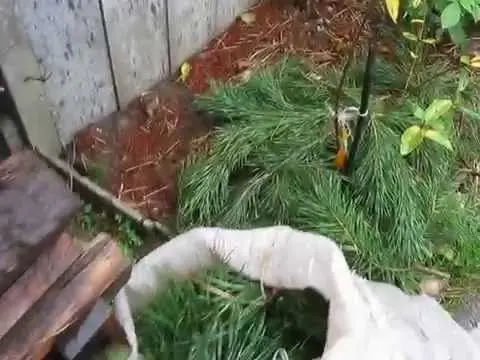Contents
Few gardeners know that the reason for the poor fertility of shrubs and the low aesthetic appeal of an ornamental plant lies in improper preparation for wintering. Today we will tell you whether it is necessary to cover honeysuckle for the winter.
General rules for preparing for winter
Honeysuckle is a climbing or erect bush, the blue berries of which are widely used in folk medicine. Due to the many useful substances, berries have a beneficial effect on the cardiovascular system. They are used to strengthen the walls of blood vessels, reduce pressure and prevent the risk of developing arteriosclerosis. According to encyclopedic data, there are more than 800 species of this culture in nature. Some shrubs perform an exclusively decorative function, others are used in medicine and cooking.
So, the preparation of honeysuckle for winter begins at the very beginning of autumn. During this period, the feeding of plants in the garden with nitrogen-containing preparations is stopped. Only potassium-phosphorus additives are introduced into the soil. The soil is moistened to a depth of about 80 cm. Please note that if the autumn turned out to be damp and rainy, it is not necessary to carry out water charging irrigation.
Fall is considered the ideal time to transplant honeysuckle. During the time of rest and rest, the plant will have time to adapt to new growing conditions, strengthen and relax. With the arrival of the first spring heat, the bush is actively growing. Preparing honeysuckle for frost involves rejuvenating crown pruning. From the bush, you need to cut off all the old branches injured by precipitation and damaged by insects.
By its nature, honeysuckle is highly frost-resistant. The plant endures even severe Siberian frosts, but is afraid of sudden changes in temperature. For this reason, it is recommended to carefully prepare the shrub for wintering.
Video “Warming honeysuckle for the winter”
From this video you will learn how to cover the shrub with pine spruce branches.
What varieties need to be covered
Honeysuckle bushes can be classified into ornamental and edible. gardeners liked the varieties Kaprifol, Blue Bird, Blue Spindle, Lakomka, Amphora, etc. Most edible varieties of honeysuckle are characterized by high frost resistance and do not require additional shelter for the winter. Thus, growth buds and wood can withstand temperatures as low as -50 °C, roots and flower buds as low as -40 °C.

As for ornamental shrubs, it is recommended to insulate cover, Tatar and gray honeysuckle with covering material. Also varieties Caprifol, Brown, Gekrotta and Telman need additional protection.
What and how to insulate
Before you start warming the honeysuckle bush, it is recommended that you carefully familiarize yourself with the varietal characteristics of the crop. Sometimes the extra cover can do more harm than good. Plants that can cope with severe frosts on their own do not suffer from cold, but from temperature fluctuations, improper insulation and lack of air circulation.
Now let’s look at a step-by-step algorithm for warming honeysuckle for the winter:
- Clear the soil in the near-stem circle from vegetation. Pour a layer of peat on the ground, which will serve as a “cushion” for the bush.
- Remove climbing vines from supports.
- Gather the branches into a kind of bundle, bend them to the ground and secure with twine or metal staples.
- Cover the shrub with pine spruce branches or cover it with a layer of sawdust.

In winter, when all vegetation is covered with a layer of snow, honeysuckle bushes that are not covered with covering material attract the attention of hares, mice and other small rodents. You can protect the plant from rodents with the help of special garden nets or white polypropylene bags.
Care and preparation of plants for wintering depend on the climatic features of the region. For example, frost-resistant varieties are not covered for the winter in the Volga region, Moscow region and other regions of central Our Country. According to experienced gardeners, preparing honeysuckle for cold weather consists in mulching the base of the bush with peat, sawdust, straw and coniferous branches.
In Siberia and the Urals, where there is a lot of snow, thin vines can break under the weight of a “fluffy blanket”. To prevent damage to the shrub, the branches are tied into a bundle.









